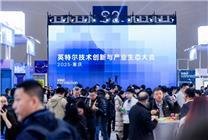Title: The Crucial Role of Rare Earths in Advanced Lithography Technology
Summary
- Advanced lithography machines depend critically on rare earth elements from China.
- Recent regulatory changes may delay the delivery timelines of these machines.
- Despite concerns, industry leaders express confidence in managing supply chain impacts.
In the intricate world of semiconductor manufacturing, the contribution of rare earth elements cannot be overstated, particularly for cutting-edge lithography technology. As the drive towards smaller and more efficient chips, namely 5nm and 3nm technology, accelerates, the reliance on these materials from China becomes increasingly apparent.
Recent reports highlight the critical paradigm shift in export regulations imposed by China concerning rare earth materials. These new regulations require overseas companies to obtain explicit approval before exporting products containing even minimal amounts (0.1%) of specified rare earth elements. This strategic move from China is perceived as an assertive effort to influence global supply chains, especially in the semiconductor sector, a cornerstone of modern technology.
ASML, a leader in the manufacture of photolithography machines, has addressed these changes head-on. According to sources within the company, these rare earth elements are not merely ancillary but essential components in their operations, particularly in the production of magnets and batteries that power their machines. The impact of these new regulations could lead to delays of several weeks in shipment schedules, raising concerns about the potential ramifications for the semiconductor industry globally.
However, ASML’s Chief Financial Officer has expressed a measured outlook regarding these challenges. He insists that the company has accounted for these regulatory hurdles in their supply chain management strategies. "We have a long lead time, ensuring that we have the necessary materials secured for the months ahead," he remarked. This proactive approach underscores the resilience and adaptability of leading technology firms in navigating complex geopolitical landscapes.
The Bigger Picture
This situation reflects a broader trend where nations increasingly exercise long-arm jurisdiction, especially in sectors deemed vital for national security and economic dominance. With semiconductor technology being a crucial asset in the global economy, geopolitical tensions are likely to influence these supply chains further.
The ramifications of China’s regulations could echo throughout the industry, impacting not just ASML but also other firms reliant on these rare earth elements. Observers note that such measures may slow down innovations in chip production and potentially hinder the rollout of advanced technologies that rely on smaller, more efficient chips.
Future Outlook
As the landscape evolves, semiconductor manufacturers and technology companies must remain agile. The interplay between regulatory frameworks and supply chain management will dictate how swiftly companies can adapt to new realities in the non-linear world of global trade.
Moreover, as nations assess their dependencies on critical materials, the push for domestic alternatives and innovation in material sourcing may rise. In light of recent developments, companies may strategize to diversify their supply chains or explore new technologies that reduce reliance on traditional rare earth components.
Conclusion
The dependency on China’s rare earth elements in the semiconductor industry is a pressing issue that demands attention. While current regulatory changes pose immediate challenges, the financial and operational foresight demonstrated by industry leaders like ASML highlights the resilience of the technology sector. As the industry navigates through these waters, future technological advancements and the shaping of global supply chains will undoubtedly be influenced by how effectively these challenges are managed.
By cultivating innovative solutions and strengthening supply chain stability, the semiconductor industry can continue its trajectory towards delivering cutting-edge technologies vital for the modern digital landscape.









